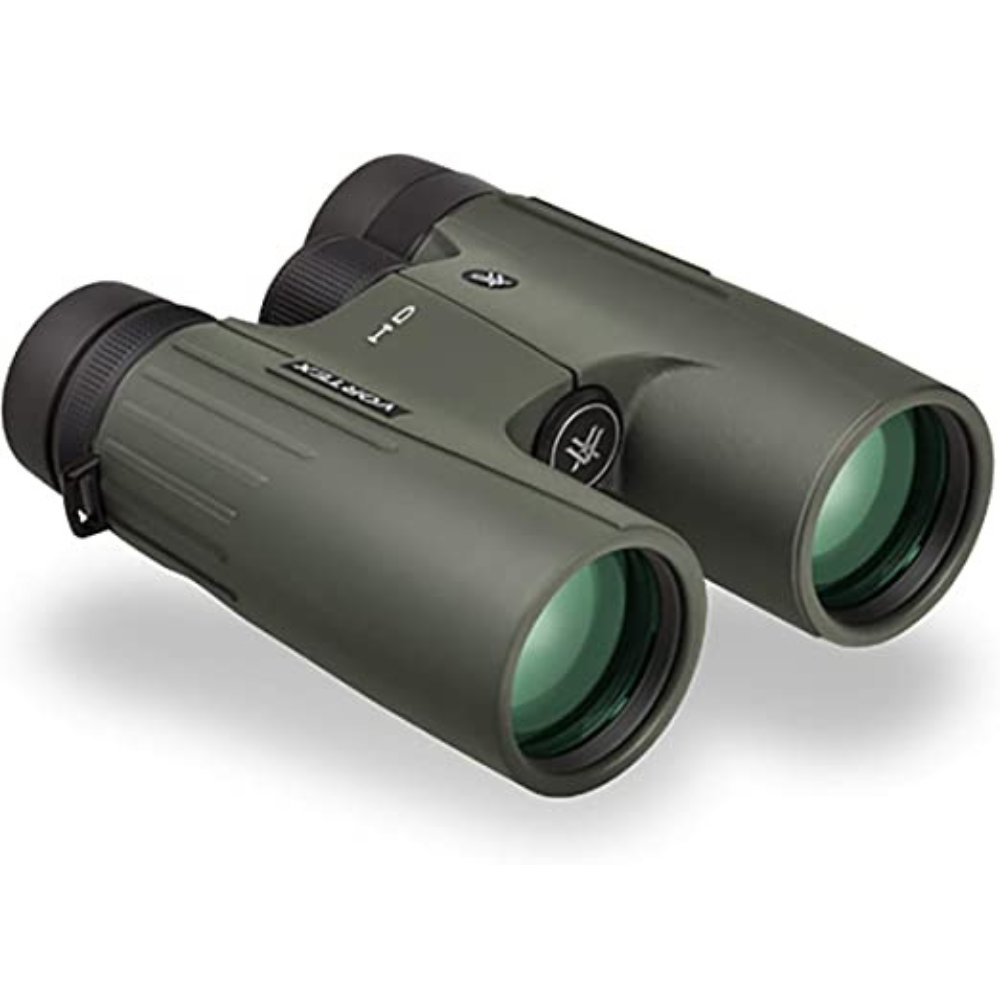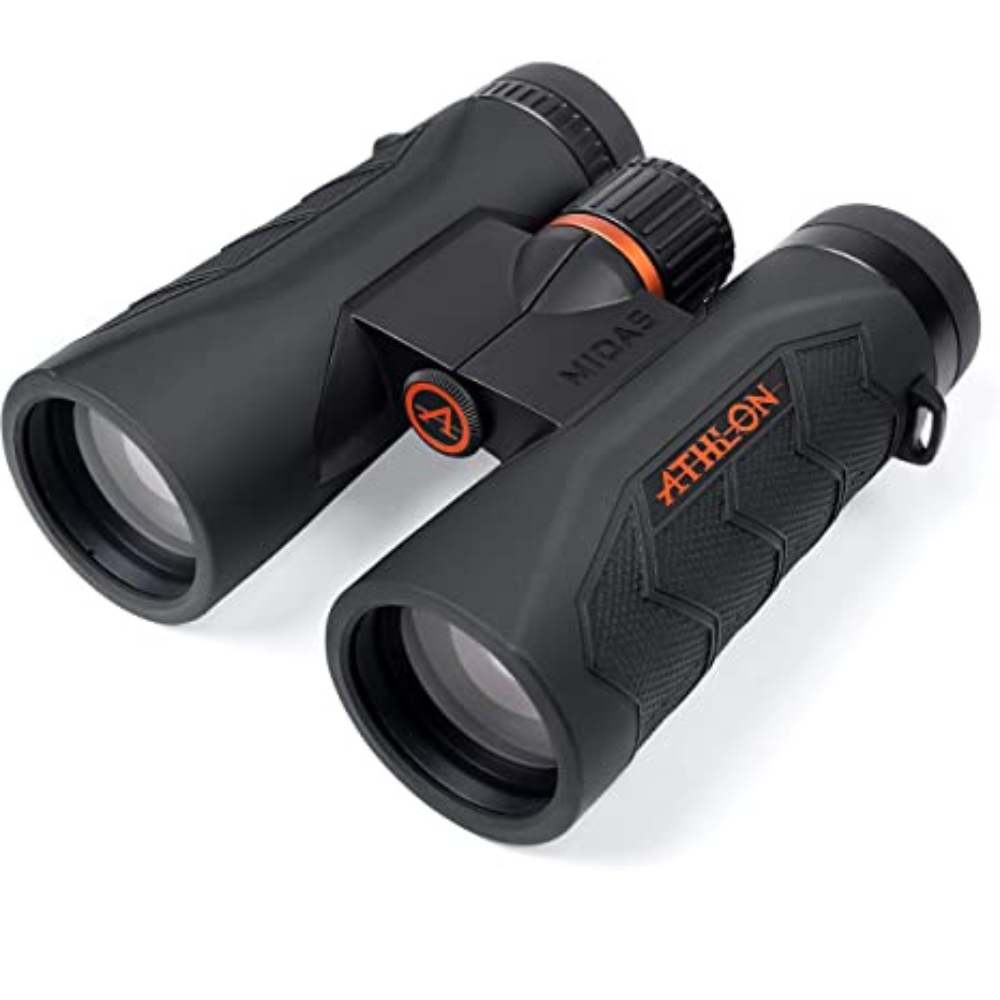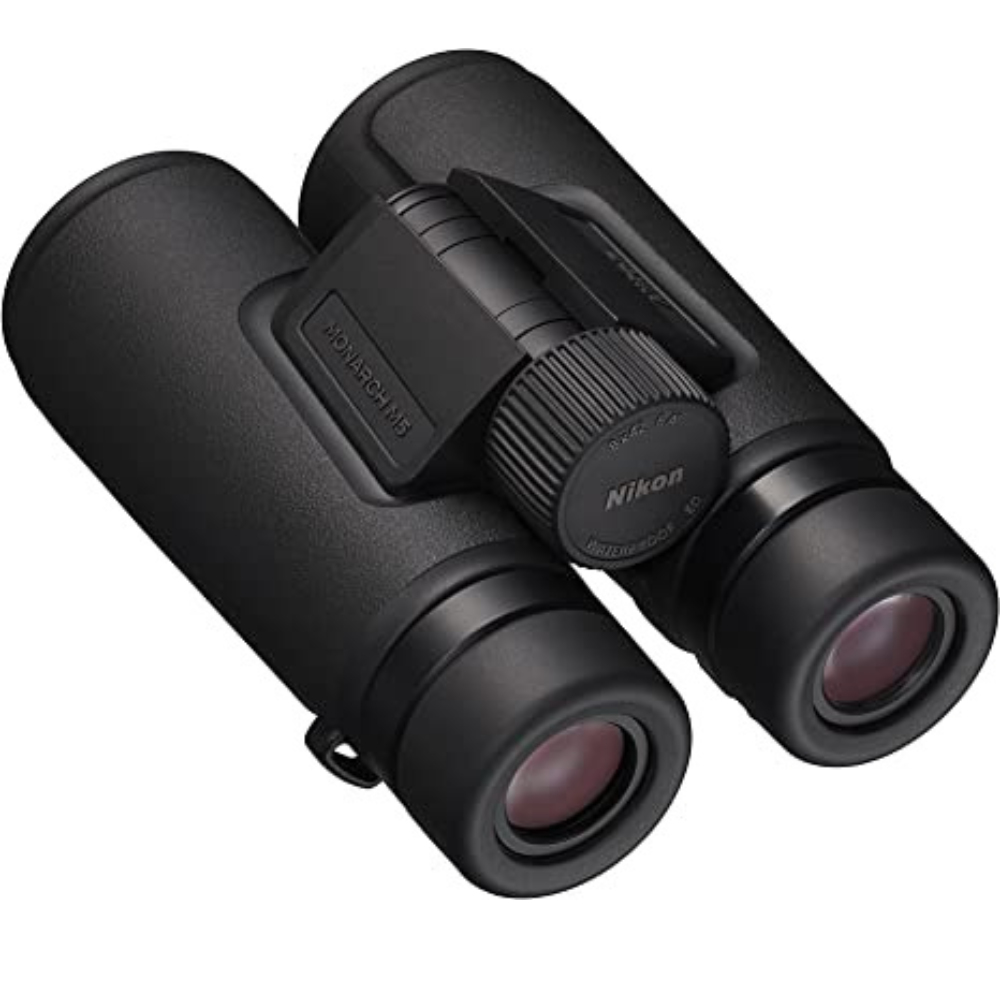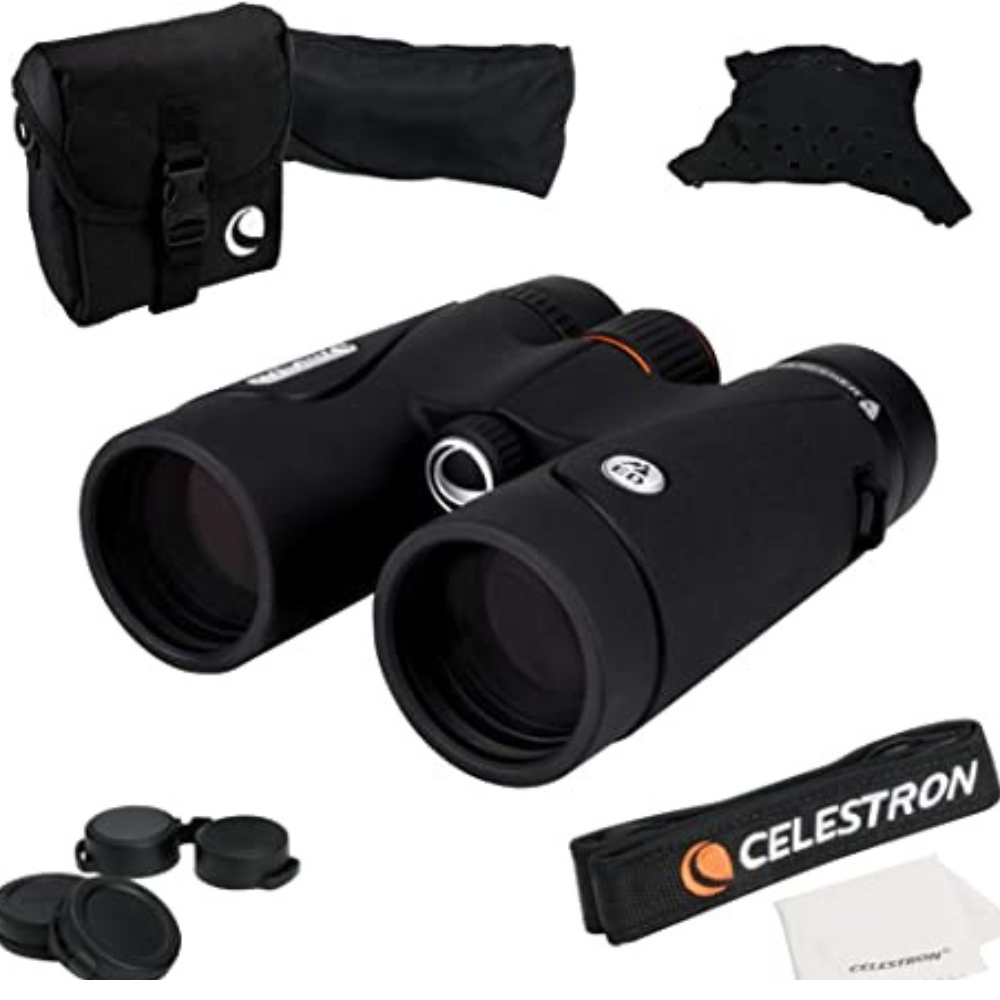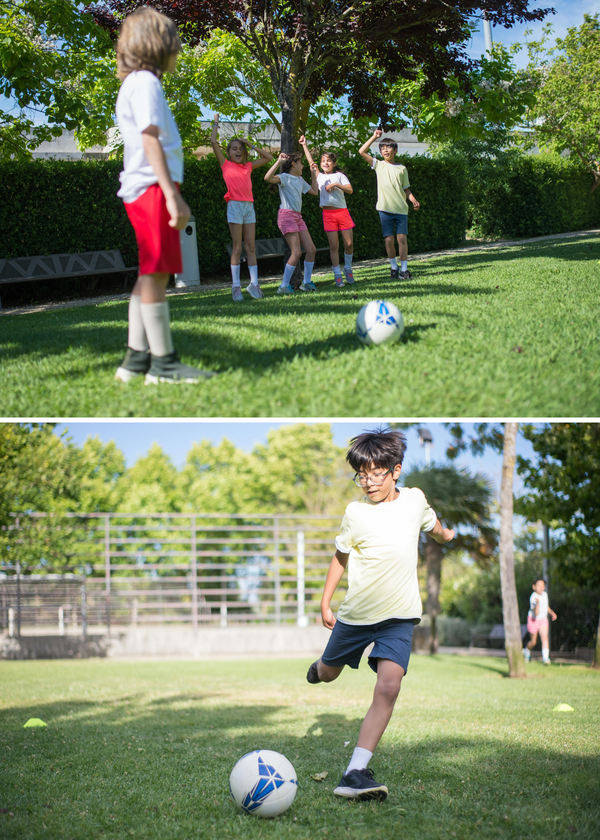Interested in Birding?
Birding is a great way to get outdoors and enjoy nature. It's also a great way to improve your identification skills for different species of birds. It's been noted that more than 47,000,000 Americans are "birders". It's one of the most popular outdoor recreational activities in the US today.
To make the most of your birding experience, it's important to have the right equipment. Buying binoculars can be difficult, especially birding binoculars. That's why we've put together this comprehensive guide to the best binoculars for birding. We'll help you choose the perfect pair of binoculars for your needs, and breakdown optics quality, as well as price ranges, so whether you're a beginner or an experienced birder, there is one for you.
Check out our selection of the best birdwatching binoculars and find the perfect pair!
We hope you find your next favorite thing from the list below! We selected each product with care and thought. Some may have been sent to us for review but all opinions in this article are ours- we know that's why Techi-Becky Reviews was created so readers could get an honest opinion on anything they were curious about online without having worry if it would be negative or not helpful towards their needs because every single piece of content submitted goes through rigorous scrutiny by professional editors who only publish items backed up by research evidence when possible.FYI — Techi-Becky Reviews may collect a share of sales or other compensation from the links on this page if you decide to buy something (that's how we stay in business) Thanks for reading!!!
How We Choose the Best Binoculars for Birding
It can be hard to find quality binoculars that are perfect for birding.
Not all binoculars are created equal. Most of them are terrible for birding. Binocular brands can be a challenge to choose from.
I’ve read through thousands of reviews on Amazon to find the best binoculars for birding.
I’ve compiled a list of the Top 5 binoculars for birding, so you don’t have to waste your time reading through all the reviews yourself, we did it for you!
Becky’s Choice:
Looking for a great pair of binoculars?
Vortex Optics has the perfect pair of binoculars for you. The Viper HD Roof Prism Binoculars 10x42 are designed with a high-density optical system that delivers exceptional resolution and edge-to-edge clarity. XR anti-reflective lens coatings give a bright image, and full views even in low-light situations.
So whether you are bird watching or hunting, these binoculars will provide you with stunning views every time.
With its sleek design and comfortable grip, the Viper HD Roof Prisms Binoculars 10x42 are perfect for any outdoor activity. And with their waterproof and fog-proof construction, you can be sure they’ll withstand any weather conditions.
So don’t wait any longer – order your Viper HD Roof Prisms Binoculars today!
Techi- FunFacts:
The Viper HD is high-end, full-size yet compact binocular that is suited for any hunt. With 10x magnification and 42mm objective lenses, it offers superb optics in a sleek design.
An easy-to-grip, rubber-armored chassis with perfectly placed thumb indents provides superior ergonomics, while the XR anti-reflective coating ensures optimal light transmission.
Whether you're scouting for games or tracking them on the move, the Viper HD binocular is an essential piece of equipment for any serious outdoors person. Great among most binoculars for birding of course!
Becky’s Choice:
Athlon Optics Midas Binoculars are just the thing for anyone who loves spending time outdoors, whether you're birdwatching, hunting, or just enjoying a nature hike.
With ED glass, these binoculars provide great images with little to no chromatic fringe. So you can be sure that what you're seeing is crisp and clear.
They're also lightweight and compact, so they won't weigh you down when you're on the go. Plus, they come with a carrying case for easy transport.
Whether you're a seasoned pro or a beginner, Athlon Optics Midas Binoculars are a great choice for all members of the family who wants to enjoy the great outdoors.
Techi- FunFacts:
Good optics are essential for any hunting or birding trip. You need to be able to see clearly and in detail what you are looking at, whether it is a bird or landscape. This is why having a good pair of binoculars with Advanced Fully Multi-coated lenses is so important.
The lenses provide better lighting, bringing optimum brightness and true color across the entire light spectrum. Argon Purging gives you better waterproofing and thermal stability.
In addition, the binoculars have a wide field of view, allowing you to see more of your surroundings. Plus, with a field of view of angular 8.1 degrees, you'll be able to see plenty of details. With all these features, you will be able to enjoy your trip while getting the most out of your binoculars.
Come in both 8x42 and 10x42.
Becky’s Choice:
There are lots of expensive binoculars. The Nikon Monarch M5 8x42 binoculars are the perfect choice for anyone looking for a high-quality optics experience that won't break the bank. With a sophisticated rubber-armored exterior design, these binoculars are shock resistant and provide a firm comfortable grip.
The locking diopter control maintains your setting, ensuring that you always have a clear view.
Nikon's Monarch M5 8x42 binoculars are an outstanding value and an excellent choice for any nature lover or outdoor enthusiast looking for affordable binoculars that produce amazing bright images.
Techi- FunFacts:
Anyone who has ever used a pair of binoculars knows that one of the most annoying things can be keeping track of the lens caps. Even more frustrating is when you lose one of the caps and are then left struggling to see through just one side.
Nikon has solved this problem with their new line of binoculars, which feature flip-down objective lens covers. Now, instead of having to fumble with two small pieces of plastic, you can simply open the lenses with a flick of your thumb. In addition, Nikon’s binoculars are made with legendary ED (extra-low dispersion) glass lenses, which produce superior image quality.
And those who like to take their binoculars into rugged terrain will be happy to know that these binoculars are waterproof and nitrogen-purged for fog-free performance.
So whether you’re birdwatching in your backyard or hiking in the mountains, Nikon’s new binoculars will help you see the world in a whole new way.
Becky’s Choice:
Celestron's TrailSeeker ED binoculars are perfect for anyone who wants premium optics without breaking the bank.
These compact binoculars Feature BaK-4 prisms with phase and dielectric coatings, these binoculars offer increased light for bright, sharp images with enhanced contrast and resolution. Plus, the non-slip grip and large eyecups make them comfortable to use, even for extended periods.
Whether you're birdwatching, hiking, or simply enjoying the outdoors, these compact binoculars- Celestron TrailSeeker ED binoculars are a great choice for all your needs.
Techi- FunFacts:
The TrailSeeker Binocular is a top-of-the-line bird-watching binocular that is perfect for any weather conditions. Its magnesium alloy frame is both light in weight and durable, making it easy to handle during use.
The ergonomic design ensures that the binoculars are easy to use for both adults and kids alike. The fully waterproof design means that you can use the binoculars in any weather conditions, ensuring that you always have a clear view of your surroundings.
With its high-quality construction and easy-to-use design, these compact binoculars- TrailSeeker Binocular is the perfect choice for anyone looking for top-of-the-line bird-watching binoculars.
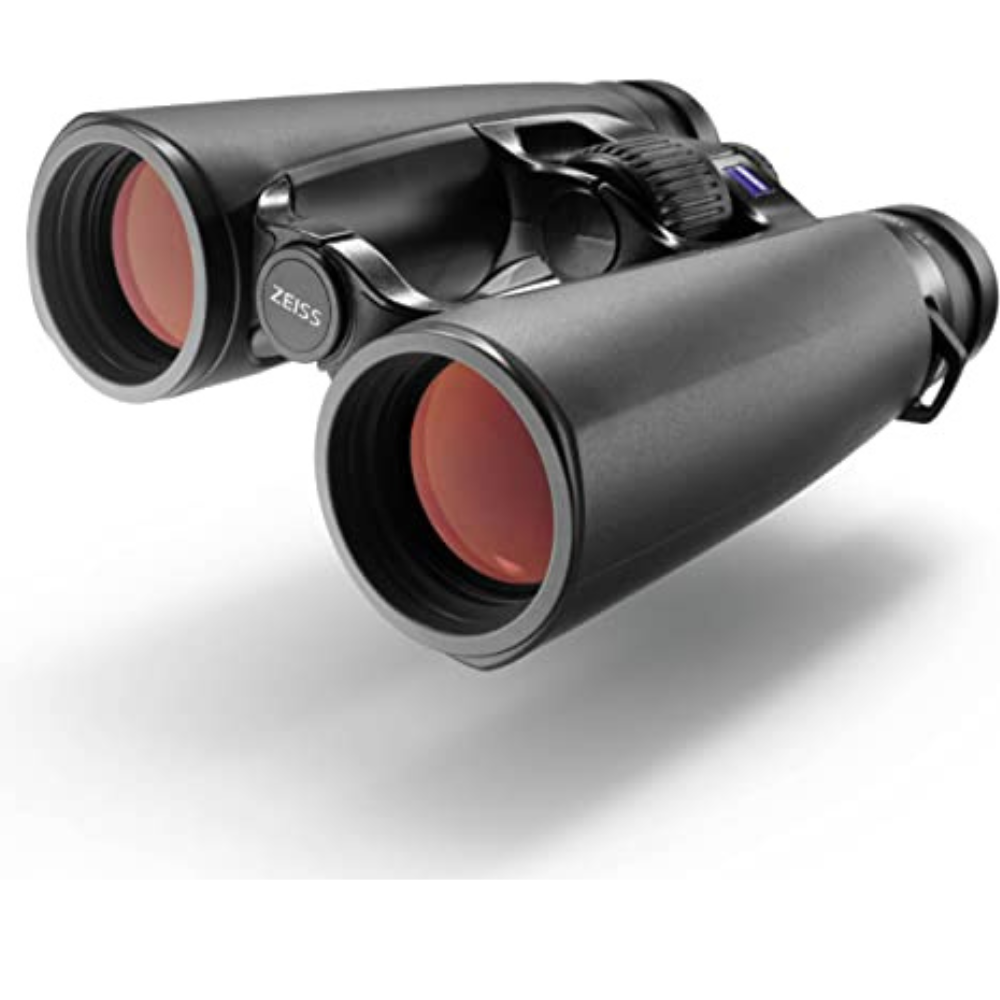
Zeiss 10x42 Victory SF Binocular with Lotu-Tec Protective Coating
Best Premium -Top of the Line
Becky’s Choice:
The Zeiss 10x42 Victory SF Binocular with Lotu-Tec Protective Coating provides unrivaled clarity, brightness, and resolution of details, even in the harshest conditions.
With a sleek, ergonomic design and advanced optics technology, the Victory SF is the perfect choice for any outdoor activity, from bird watching to hunting and everything in between.
Thanks to the Lotu-Tec protective coating, your binoculars will resist water, dirt, and fingerprints, making them easy to keep clean and looking like new.
With the superior transmission of light and an ultra-wide field of view, you'll be able to spot your prey from a distance and make the perfect shot every time. Order your Victory SF binoculars today and enjoy nature like never before!
Techi- FunFacts:
For birdwatchers, getting a clear and detailed view of their feathered friends is crucial. That's why they need binoculars that can provide true-to-life image quality, even in low-light conditions.
The ZEISS Victory SF family was developed specifically to meet the needs of birdwatchers. With a UFL Concept, the optical performance is maximized, providing birdwatchers with the clearest possible view. In addition, the binoculars are designed to be comfortable and easy to use, even for extended periods. They are durable binoculars that can last you a long time with proper care.
Whether you're a seasoned birder or just getting started, the ZEISS Victory SF binoculars will help you make the most of your birdwatching experience.
Things to Consider Before Buying Birding Binoculars
Magnification:
When it comes to observing birds, magnification is key. Most binoculars are advertised with a range of numbers, such as 8x42, 10x42, 12x50, and so on. But what do those numbers mean? And more importantly, what is the best binocular magnification for birding?
In general, the higher the number in magnification, the shakier your image can be, creating lower-quality optics. That's why experts typically recommend binoculars with a lower magnification, such as 8x. Not only will you get a clearer image, but you'll also be able to keep your binoculars steady in your hands.
So when you're shopping for your next pair of birding binoculars, don't be fooled by the high numbers and think that you can just turn your focus wheel to get the best view. Instead, look for a pair with a lower magnification for the best image quality results.
Phase Correction Coating:
Most people don't think about the phase correction coating on their binoculars, but it's a really important part of the design.
This coating helps to keep colors clean and bright, and it also helps to improve contrast, resolution, and color reproduction. In other words, it makes the image you see through your binoculars look as close to reality as possible, HD glass-like. That's why phase correction coatings are so important - they help you to see the world more clearly.
So next time you're out enjoying some birdwatching or stargazing, take a moment to appreciate the phase correction coating on your binoculars!
Weight of your Binoculars:
The weight of the binoculars can be very important. Lightweight binoculars are always a great choice. Ideally, you should aim for a pair that weighs between 12 ounces and 1.5 pounds. This is because binoculars that are too heavy can be difficult to carry around, particularly if you're going to be spending hours walking through woods or hiking up mountains.
On the other hand, binoculars that are too light may be less durable and more prone to shaking, making it difficult to get a clear image. So if you're looking for the perfect balance of weight and performance, make sure to keep your binoculars within this ideal range. Light can equal cheap binoculars.
Wide Field of View:
When using Birding binoculars, one of the most important factors to consider in the field of view. The field of view is a measure of how wide a view you can see as you look through the binoculars.
A wider field of view means that you will be able to scan a larger area, making it more likely that you will spot your target. Conversely, a narrower field of view will make it more difficult to find what you are looking for. When choosing binoculars, always opt for a model with a wide field of view.
Close Focus:
There's something special about getting a close-up view of the natural world. Whether you're watching birds at your feeder or observing plants and animals in their natural habitat, close-focus views can give you a whole new perspective on the world around you. Adjust the focus wheel and get a close-up view, you can see intricate details that you would miss from a distance, making it a great bird binocular feature.
You may notice the subtle colors of a bird's feathers or the delicate patterns on a flower petal. Seeing these details can help you appreciate the beauty of nature in a whole new way. So next time you're out birdwatching or enjoying a nature walk, take some time to get close focus views and personal with the natural world around you. One of the best binoculars feature.
You just might be amazed at what you see.
Adjustable Eye Cups/ Eye Relier:
Adjusting the eyecups on your binoculars is an important step in getting the best image possible. The eyecups should be positioned so that the full field of view is visible and there is no vignetting (darkened corners).
The eyecups also play a role in eye relief, which is the distance between the lenses and your eyes. If the eyecups are not correctly positioned, you will not be able to see the full field of view.
For most people, the ideal eye relief distance is between 14-17mm. However, this can vary from person to person. If you wear glasses, you will need to position the eyecups so that they are flush with your glasses. This will ensure that you have a clear view of the entire field of view. Adjusting the eyecups may seem like a small detail, but it can make a big difference in the quality of your image.
Flat-Field Lens Technology:
Birding binoculars are a type of telescope designed specifically for bird watching. They are often used by amateur bird watchers, as well as professional ornithologists for ultimate image clarity.
The main advantage of binoculars over other types of telescopes is that they allow the user to see both near and far objects at the same time, without having to refocus the lens. This makes it much easier to track moving objects, such as birds in flight.
Binoculars with flat field lenses are especially well-suited for bird watching, as they provide edge-to-edge sharpness that is just as sharp and focused as the center image. This means that there is no distortion, making it easier to identify birds.
Whether you're a serious bird watcher or just enjoy watching birds in your backyard, binoculars with flat field lenses will take your experience to a whole new level.
Waterproofing / Fog Proofing:
Weather is something that you need to factor in when you are birding the outdoors. Waterproof and fog-proof are very important. Internal fogging is more important than outside fog. Inter fogging can simply ruin your binoculars.
Make sure your binoculars are sealed internally with O-rings to prevent debris, moisture, and dust from getting in.
You also want to make sure that they are nitrogen or argon purged. This will help to further prevent any type of internal fogging. Not to mention, it will also add to the longevity of your binoculars.
If you take care of them, they should last you for years to come. So, when venturing out into the great outdoors, be sure to keep the weather in mind and pack accordingly! Your binoculars will thank you.
Extra-Low Dispersion Glass:
Even with a high-quality telescope, you may notice some color fringing around the edges of the image and glass surfaces.
This phenomenon, known as chromatic aberration, is caused by different wavelengths of light being refracted differently as they pass through the lens. However, you can reduce this effect by using Extra-Low Dispersion (ED) glass. ED glass has special properties that allow it to refract light more evenly, resulting in a cleaner and brighter image.
So if you're looking for the best possible bird-watching experience, make sure you have ED glass in your telescope.
Challenges in Identifying Birds
Size:
Birding can be a challenging hobby, especially when it comes to identifying different species.
Many birding guides don't cover all the nuances that can help with identification, so it's important to be aware of some of the key things to look for.
One important factor is size - many birds can look similar in size, but there can often be subtle differences that can help you ID them.
Another key characteristic is wing shape - the shape and positioning of a bird's wings can often be a good clue as to what species it might be.
Finally, watching how a bird moves can also be helpful, as different species have different locomotion patterns.
By keeping an eye out for these key factors, you'll be well on your way to becoming a master birder!
Lighting:
Many birders prefer the early morning hours because the lighting is ideal for spotting birds.
The low angle of the sun creates long shadows, making it easier to see birds that might be hidden in dense vegetation. In addition, the air is typically the calmest in the morning, making it easier to hear the birds singing.
Of course, not everyone is a morning person, and there are certain drawbacks to birding at this time of day. For example, mosquitoes and other insects are often more active in the early morning hours.
However, if you can deal with a few pesky bugs, you're likely to find that dawn is the best time of day for birdwatching.
Feathers:
No two birds are exactly alike, and even the most experienced birders can sometimes have trouble identifying a species based on its plumage. However, there are a few things to keep in mind that can help.
First, it is important to remember that feathers can vary considerably from individual to individual, and even from season to season.
So, if a bird you are observing doesn't match the expected form for its species, it may just be an aberration.
Second, feather loss is relatively common in birds, so a balding or scruffy-looking bird is not necessarily causing alarm.
Finally, it is worth noting that baby birds often have different-looking feathers than their adult counterparts. By taking all of these factors into account, you'll be better equipped to identify the feathered friends you encounter.
The Bottom:
Anyone who has spent time outdoors is likely to be familiar with ducks. These popular birds can be found in a variety of habitats, from lakes and ponds to backyard pools or narrow field areas. While many people can easily identify common species such as the mallard, identifying other types of ducks can be more challenging. However, there is one easy way to tell dabbling ducks apart: by simply looking at their butts.
The Mallard, for example, can be identified by the two curls sticking up.
The Northern Pintail has four-inch feathers that are longer than any of its dabbling counterparts.
The Green-Winged Teal has two gold patches on its tail.
So next time you're out birdwatching, don't forget to take a closer look at the duck's behind!
Best Binoculars for Birding -FAQs
Is 8x42 or 10x42 better for birding?
Most would lean towards 8x42 binoculars for birding. Birders simply feel that it makes sense. The wider field of view and larger exit pupil makes spotting fast-flying and camouflaged birds much easier than using 10x42.
What magnification is best for birding binoculars?
Not all binoculars have the same magnification. For general birding, most binocular manufacturers have 8x as the standard. This gives sufficient magnification power and gives a good fit of view. As a general rule of thumb, the 8x binoculars are easy to hold steady.
Are 12x binoculars good for bird watching?
One would think that 10x or 12x may be the best. But this is not the case. There is a trade-off, the higher the magnification your binoculars have the more you lose things that are essential to bird watching. The higher the magnification the shakier the image will be.
Are zoom binoculars good for bird watching?
Zoom binoculars are good to have as addition and are overall recommended. Zoom can be advantageous for some types of bird watching.
What does 8x42 mean for binoculars?
As far as 8x42 binoculars, the 8 is the magnification power and the 42 is the diameter (millimeters) of the objective lenses (the lenses closest to the object you're viewing).
Lens sizes give you an understanding of how physically big the binoculars are and how much more light they can gather.
What strength of binoculars is best?
6x10 binoculars are generally easier to use, but for bird watching, keeping shaking to a minimum, and staying with moving objects, 8x10 magnification is best.
If you enjoy going to theaters, a lower magnification may be best and easier to use as well as its portability.
How do you pick wildlife binoculars?
The best thing to consider is getting the binoculars that are best for your wildlife viewing.
Binoculars with magnification of 8 or 10, and lens sizes of 40 or 42, are generally considered the best for wildlife viewing.
Do I need 8x or 10x binoculars?
If you are in situations where birds are going to be close or closer and fast-moving, then 8x is recommended and best suited.
The field of view on 8x is wider than that of 10x binoculars.
How far can 7x35 binoculars see?
7x magnification will not get you close to your favorite bird friends as most of the other binoculars would.
The field of range from over 400 feet to 500 feet is great for finding them in the first place.
How do you pick a good pair of binoculars?
Lower optics quality can play a role if you select the wrong binoculars., Look for an objective lens size between 35mm and 42mm. 50m may add some weight to the binoculars.
For magnification, you may want to stick to 7x, 8x, or 10x.
Consider, that the lower magnification will give you a wider field of view, the higher magnification, the more details for optical quality.
How does it affect my view if I wear glasses?
No need to worry. Most all binoculars are made to accommodate all, even those who wear glasses.
Vortex Optics Viper HD Roof Prism Binoculars 10x42
Athlon Optics Midas Binoculars
Nikon Monarch M5 8x42
Celestron TrailSeeker ED
Zeiss 10x42 Victory SF Binocular
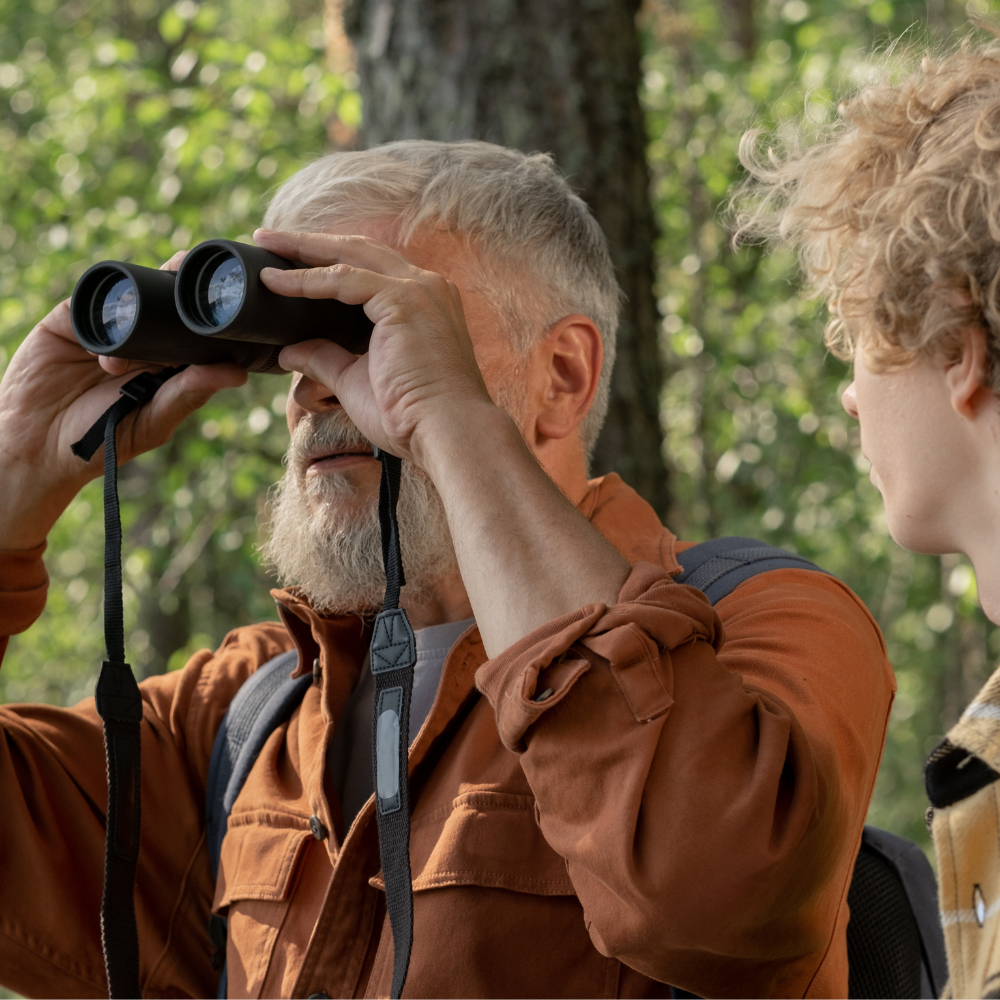
Best Birding Binoculars for You!
So, whether you are looking for a high-end pair of binoculars to take with you on your next birding trip around the world or just want a good pair to keep in your car for when you spot that rare bird at the park, we’ve got you covered.
We hope this article was helpful and that you found the perfect pair of binoculars for birding!
Tap the GREEN button to check the price of the Best Binoculars for Birding!
Happy Birding,
Thanks for Techin-In!
Becky.



